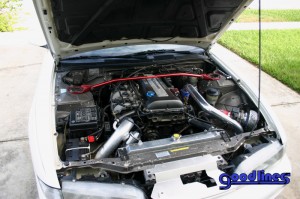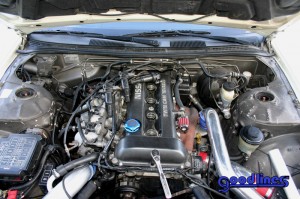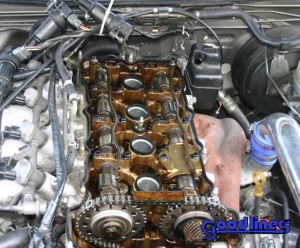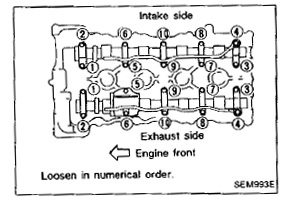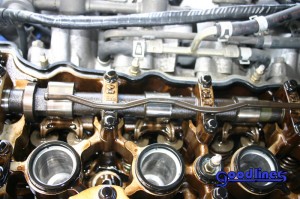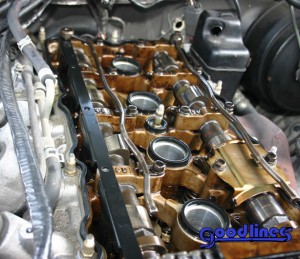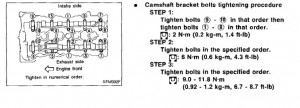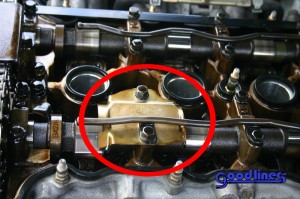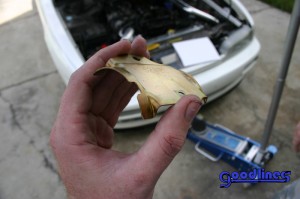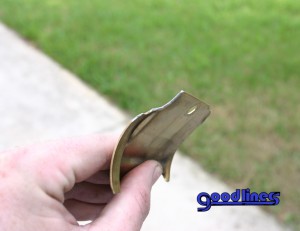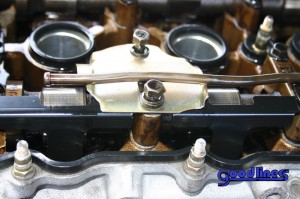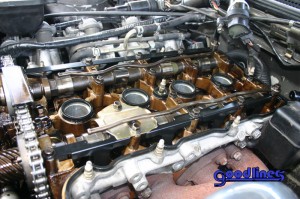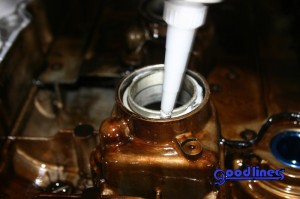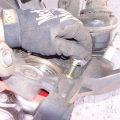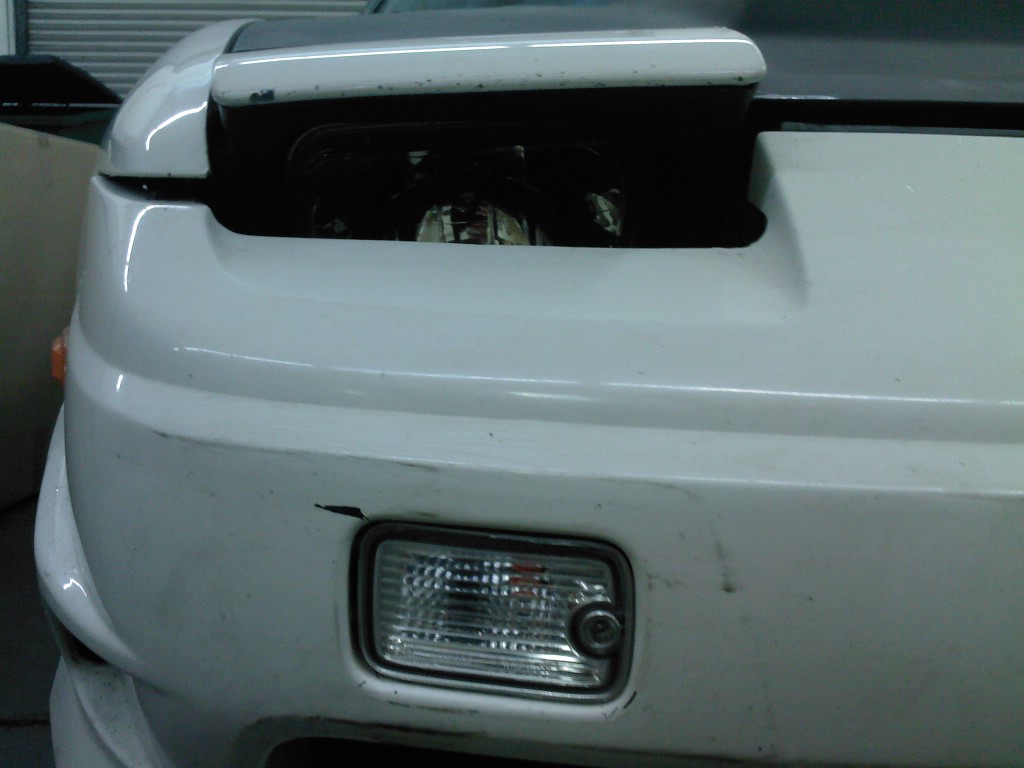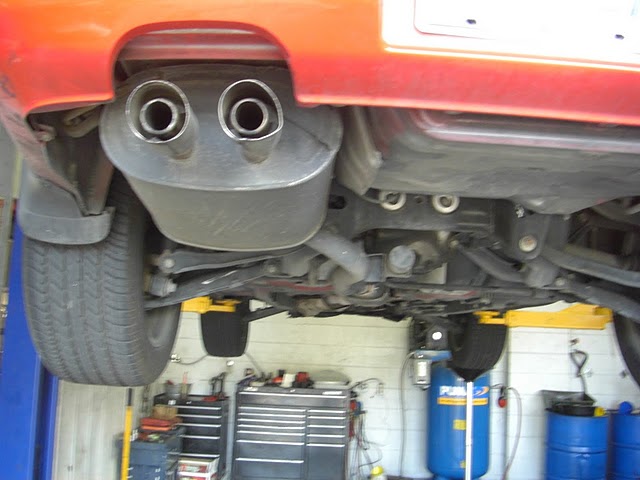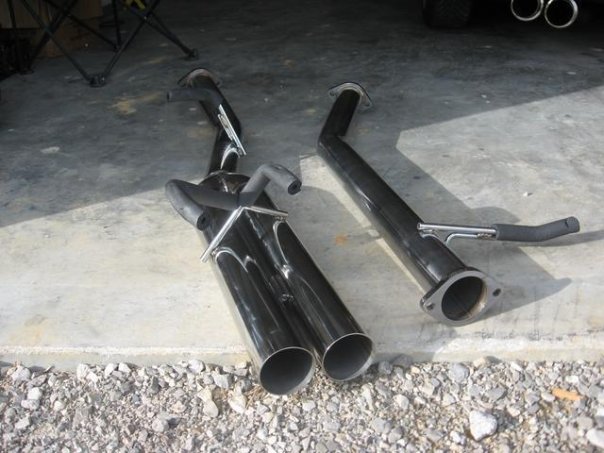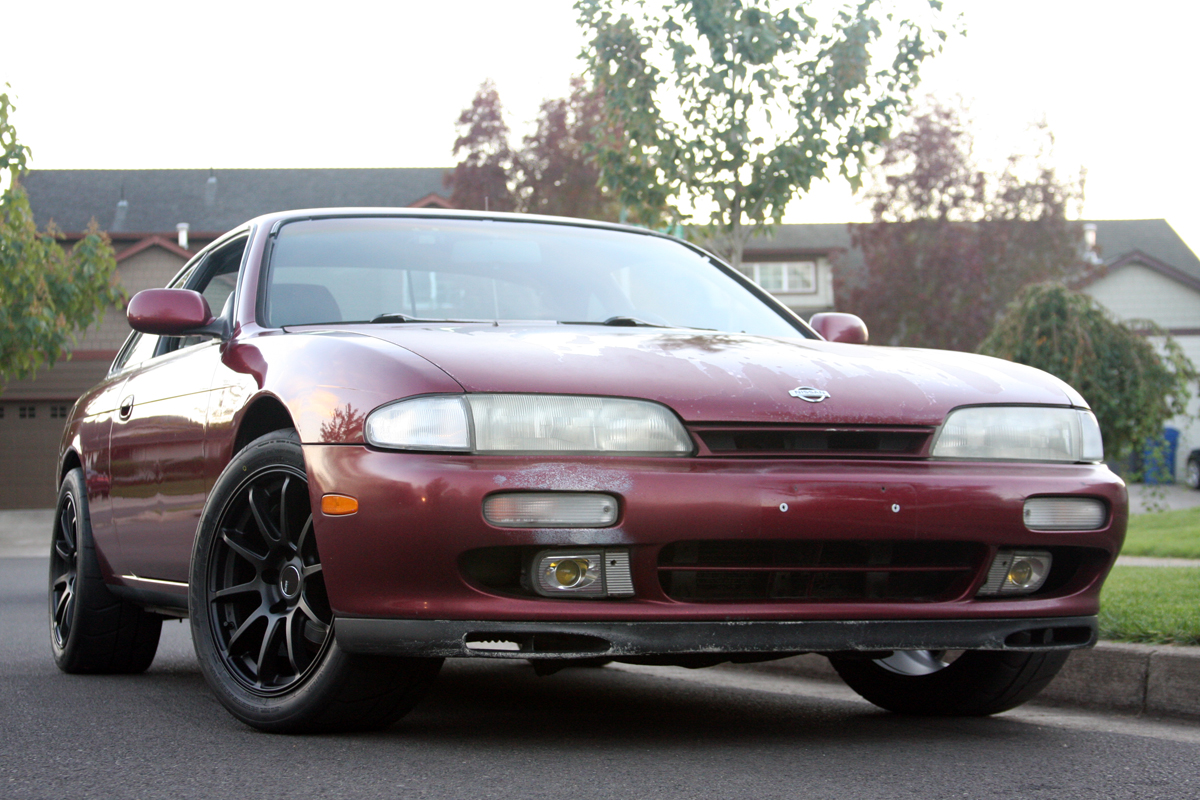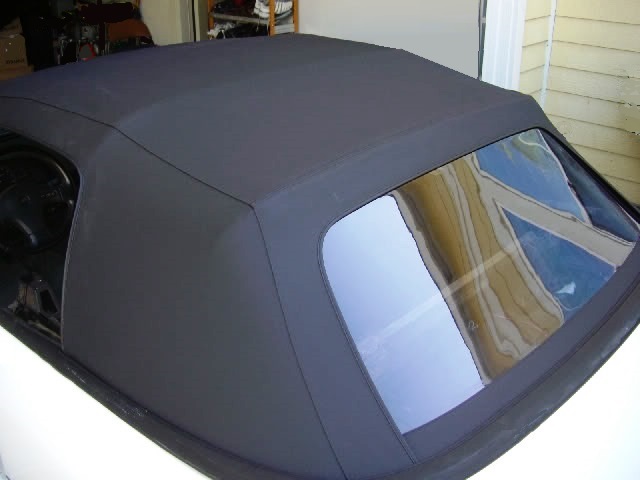Overview:
Rocker Arm Stoppers (or RAS’s for short) are a must for any SR20DET. They’re pretty cheap, easy to install, and will prevent bent valves. Think of this as an insurance policy for your SR20.
Tools:
1. 10mm socket
2. FSM
3. Liquid Gasket, pref high temp
4. Tq. wrench
5. Spark Plug socket
Materials:
1.Rocker arm stoppers
2. New valve cover and spark plug gasket (if not re-using the old one)
Procedure:
First, as always, disconnect your battery before servicing your vehicle. Drain your oil. Also disconnect the air-line to the factory oil catch-can and remove the line that goes to the throttle body.
Now start removing the 10mm valve cover nuts. There should be 13 in all (5 on either side and 3 down the middle.
Be very careful as you don’t want to get any debris in your head.
Begin to loosen the cam bolts in alternating order, ie: loosen the front two then the back two, etc. The FSM details exactly how to remove them.
Pic from the FSM:
You’re going to remove the “outside” cam bolts but you still want to loosen the “inside” bolts as well. Keep the bolts in proper order as you take them out.

The “fingers” of the RAS’s will sit down inside the head and sit just above the rocker-arm. Now you see why they’re called Rocker Arm Stoppers.

Tighten the bolts. Factory spec is 8.7 ft-lbs, from the fsm
The “driver” side is very similar with the exception of this oil baffle. After a search on NICOClub, I found that some owners remove the baffle. Others cut it down for fear of blow-by.
Removed, as you can see the curves on the end will get in the way of the RAS’s.
After a little time with the Dremmel, the edges are now flat. install the baffle under the stoppers. Be sure verify that the new cut is nice and smooth, you don’t need any metal shavings in your head.
Again this part seems to be optional as some owners have just thrown theirs away. If you don’t have the tools or if the baffle is already missing, don’t sweat it.
installed:
All finished.
The factory rubber gasket is reusable and I used Permatex Ultra Gray liquid gasket for a good seal. Other liquid gaskets and RTV’s may work as well. This is the gasket for the sparkplugs.
Edit: Again, I did use the rubber gasket, although it is not pictured here.
Please follow all safety precautions when servicing your vehicle. Failure to do so may result in expensive damages to your car and injury to yourself. This write-up was done in good faith to assist other auto enthusiast. Please check the factory service manual and your local dealer before attempting any work on your car.
